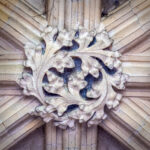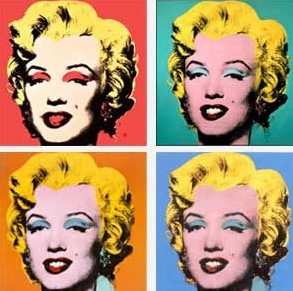Terry Barrett
The weight of photography: Photography History Theory and Criticism, Johan Swinnen and Luc Deneulin, Editors. Brussels: ASP, 2010, pages 147-172.
All images required interpretation: Barrett sets out principles that he has culled from a variety of sources to assist in this act.
He maintains that art does NOT speak for itself. Danto has a theory that suggests that all art is about something and is therefore different from ordinary objects. (???) the follow on from this is that art needs interpreting to function as artwork. (!)
Dantos theory is summerized as:

He asserts that images provide insights, information and Knowledge only if we interpret them.
Photographs ‘carry more credibility than other kinds of images and especially require interpretation.
To interpret an image is to respond to it in language.

When interpreting images we bring to bare a range of life experiences, emotions and insights. Initially these will be incoherent jumble, but Interpretation means articulating our responses in words.
The act of photographing alters what the photographer saw.
People tend to look through photos rather than at them, ie they do not see the image as a constructed image of the world but rather as if it were the real thing.
Photographs should be seen as opinions
Feelings are guides to interpretations: without feelings or emotional responses to images we are reduced to coldly describing shapes, sizes and colours etc. Thinking and feelings go together.
Photographs are made from light reflecting off of people, places and objects in the world.
The photograph is caused by what it shows. (!)
Photographs are factual and fictional: factual and metaphorical. To explain a photograph we tend to use renaissance art conventions and cultural mores which have influenced the making of the image.
Photography is a subtractive medium and painting is additive. The painter starts with a blank canvas, a photographer has the scene in the viewfinder, and attempt to remove clutter to compose the subject in the image. They are significantly different ways of working and thinking with media. (??? Does it make any difference to the end product)
The subject matter of a photograph is always cut from a larger context.
Both in the framing of the image in camera then in post processing. The image is changed by view point, maybe lens choice, exposure, then the use of processing to tone, add filters etc.
Photographs are instantaneous. A discrete instance of time. Stop motion.
Photographs have unique properties of selectivity, instantaneity and credibility. Photographers both turn away from or bow towards early modes of image making.
Subject matter + medium + form + context = content
Subject matter people, places, objects (not always the same as subjects ‘cos a pole might denote a penis!)
Medium the materials and processes used by the artist
Form the way the image has been put together (composition)
Context time place and circumstances of the making of the image, or where it is shown
Language accompanying a photograph can over-determine the photograph’s meaning.
Robert Doisneau’s photo At the Café 1958. Shown in many places with different words encouraging a different interpretation/meaning
Photographs mean through use
Feotus image (Lennart Milsson) coffee table book inspires, or anti-abortion advert disgusts.
Judgements of an image can preclude alternate interpretations of that image
The critical activities of describing, interpreting, judging and theorizing about photographs are interrelated and interdependent. Being negative on one count will bring forth negative comments on the others.
Images attract multiple interpretations and it is not the goal of interpretation to arrive at single, grand, unified, composite interpretations. Differing interpretations of an image will encourage us to see different features and insights into the same work.
All images are in part about the cultures in which they emerged.
All images are in part about other images. See Cindy Sherman images then go find similar in magazines.
Interpretations imply world-views. Of course – see my talking heads anti royalist interpretation! It is up to the observer/reader of the interpretation to choose to agree with the worldview and interpretation, reject both worldview and interpretation, accept either worldview or interpretation but reject their related ideas.
There is a range of interpretations any image will allow. An image cannot mean anything we want it to mean. However we should not under- interpret. We should bring to light connections not previously noticed.
Meanings of images are not limited to what their makers meant them to mean.
The artists intents can be useful to interpreters, but not limited to them. Minor White said ‘photographers frequently photograph better than they know.” Once text is released it takes on a life of its own and is beyond the maker’s control. The intention of the text is a much broader concept that includes the intention of the photographer but also includes linguistic and cultural and artistic conventions… To merely accept the photographers intent is to put the viewers role into a passive accepter of interpretation. It robs the viewer of thinking through new insights.
Interpretations are not so much right as they are more or less reasonable convincing informative and enlightening.
…and varied
Some interpretations are better than others.
A good interpretation tells more about the image than it tells about the interpreter.
Statements about likes and dislikes are merely preference statements by the viewer. They are not reasoned.
A good interpretation tells more about the image than it tells about the interpreter…
The objects of interpretations are images not image makers. Think about the images of Sally Mann or Mapplethorpe
Good interpretations have coherence correspondence and completeness. That is the can be seen to relate to the image in question and its ‘causal background’.
Interpretation is an endeavour that should be both individual and communal.
Interpretation as an act of ‘rearranging’ ones priorities and worldview. Different sets of people will appreciate works in different ways…. Sally Manns photos of her nude children, accepted as shared experiences by youngster their age but not by adults who have different sensibilities.
The admissibility of an interpretation is determined by a community of interpreters and the community is self-correcting.

Good interpretations invite us to see for ourselves and continue on our own.




